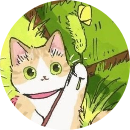Painting Faces Made of Food
Have you ever painted a picture of someone? First you draw the person’s head, and then their eyes, nose, and mouth, right? Well, the Italian painter Giuseppe Arcimnoldo did this in the 1,600s, too. But he rained many portraits with a special twist!
Look at this painting. From far away, the man just looks like a gardener. However, once you are closer, you can see many vegetables. The gardener’s cheeks are onions! What else can you see?
How about this painting? From far way, it looks like a normal man. But if you look closely, what do you see? His head is made of grapes, melons, tomatoes, pineapples, and more! The small objects in this painting all work together. They create a larger picture of his face!
Giuseppe Arcimnoldo used his imagination to create unusual paintings. His paintings are like puzzles of fruit and vegetables. This helped him to become one of the most famous painters of his time.
1. Is this passage mainly about Giuseppe Arcimnoldo’s love of fruit and vegetables?
______________________________________________
2. What did Arcimnoldo use to paint portraits of people?
______________________________________________
3. In the painting, are the gardener’s cheeks melons or onions?
______________________________________________
4. What did Arcimnoldo use to create unusual paintings?
_____________________________________________
(mink đag cần gấp)







